
Dodgy Bugger Pocket, June 2006, about 2 meters across. J. Fisher photo.
The finds of the first year far surpassedexpectations of everyone involved.
What was initially expected to bea short collecting adventure quickly becamea full-scale business of mining andselling specimens. Although productionhas varied a good bit from year to yearduring this time, it has been enough tokeep us coming back each year for more.
The Dodgy Bugger "potato" in the mine, and after extraction. Not all specimens get glamorousnames! J. Fisher photos.
POCKETSThe Black Sheep Pocket Zone
Collecting during our first year focusedon an area of mineralization thatwas found half way between the mine entranceand the end of the original adit, inthe area that was successfully worked during the 1980’s by CMaMC. In an alcoveon the east side of the adit, greenfluorite was exposed in numerousstringers and pocket remnants. In earlyJune while stabilizing a promising sectionof the adit with some new timbering,we noticed a mud seam on the face of thealcove. As the mud was washed awayand a few slabs of rock were removedfrom the face, it became apparent thatthis was the opening of a fairly large cavitycompletely lined with green fluoritecrystals. The pocket proved to be an interconnectedseries of fluorite-lined solutioncavities in the flats to the east ofthe vein, and extraction lasted throughthe better part of our first two years atthe mine. By the end of the first summerthis area, named the “Black SheepPocket” in honor of a local ale popularwith the crew, had been opened up to alength of approximately 5 meters, yielding many more specimens than anyonecould have hoped for. The wallrock surroundingthe cavities in this area of themine was highly silicified and collectingspecimens of any size was virtually impossiblewithout using a hydraulic-powereddiamond chain saw to cut them out.
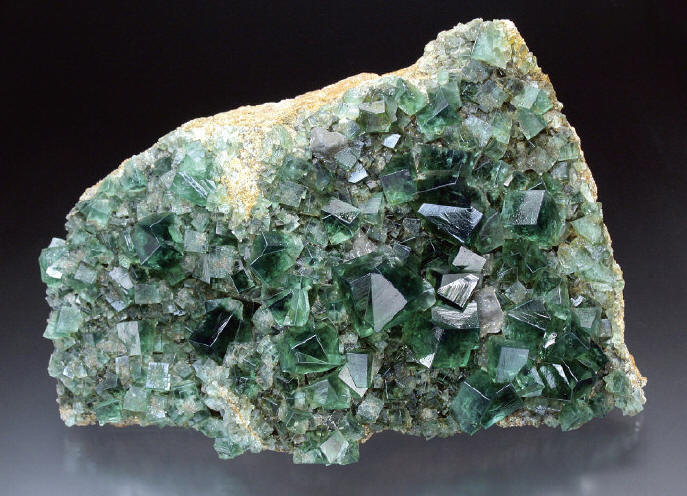

Fluorite from the Dodgy Bugger Pocket. Same specimen photographed in artificial light (left) and daylight (right). J. Fisher photos.
While the finds of the first summerhad been largely a matter of “dumbluck”, the strategy for our second year(2000) was to access the mineralizedflats of the Black Sheep area by driving anew drift branching to the northeastfrom the main adit near the mine entrance.
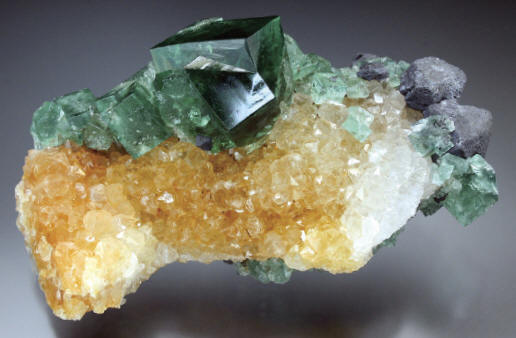
Fluorite on quartz from Dodgy Bugger Pocket, 9 cm wide. UKMV specimen. J. Fisher photo.
This drift would theoretically intersectthe flats near the rear of the firstyear’s productive zone and provide betteraccess to the mineralized area. Tunnelingbegan in early June and themineralized area was reached in earlyJuly after driving approximately 15 metersof new drift. Collecting in this areacontinued through the summer, and inlate August the miners broke into the farend of the previous summer’s workings.
Mineralization was highly developed inthis area, and fluorite-bearing cavitieswere often encountered at three or morelevels on the working face. During thecourse of the summer, many well crystallizedspecimens were collected, somehaving glassy, lustrous penetration twinsof green fluorite over 3 cm on edge.
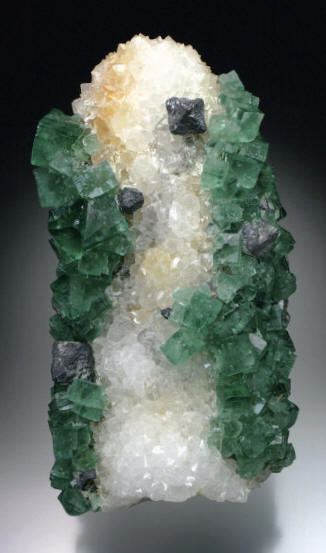
Quartz pseudostalactite with fluorite and galena from Dodgy Bugger Pocket, 10 cm high. UKMV specimen. J. Fisher photo.
During the third summer (2001),work was left off in the Black SheepPocket zone in favor of driving forwardon both the east and main adits. Afterdriving the new east adit through ahighly brecciated zone, an area of flatsto the northeast of the Black Sheep, now know as the “Birthday Pocket”,was encountered. This area of flats producedsome very nice, and often largeplates covered with twinned green fluoritecrystals. Unfortunately, many of thefluorite crystals from this area alsoshowed patches of incipient alteration.
Fluorites in situ in the Rat Hole Pocket, note pocket clay. R. Brandstetter photo.
At about the same time, an eastwardextension of the Birthday Pocket wasfound as tunneling continued northward.
This area was called “The Dipper”because the mineralized flats appeared to dip into the floor of the adit. Thoughthe Dipper area was fairly well brecciated,only a small number of good-qualityspecimens were collected between2001-2003.
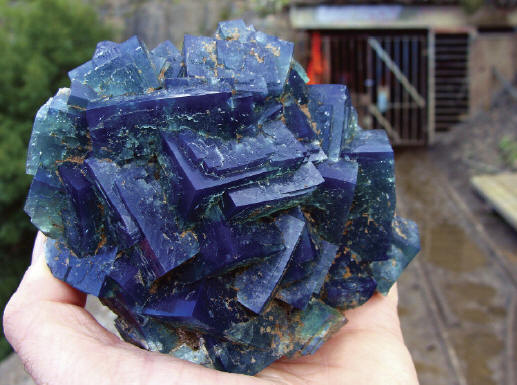
Freshly collected fluorite from the Rat Hole Pocket with very strong blue daylight fluorescence,12.5 cm wide. R. Brandstetter collection and photo.
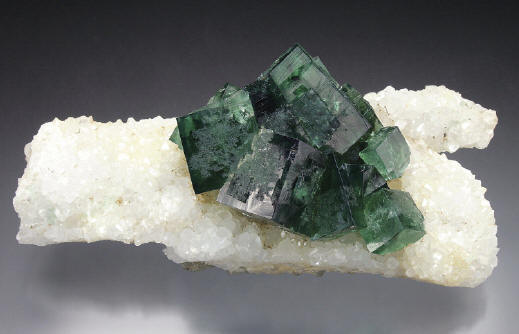
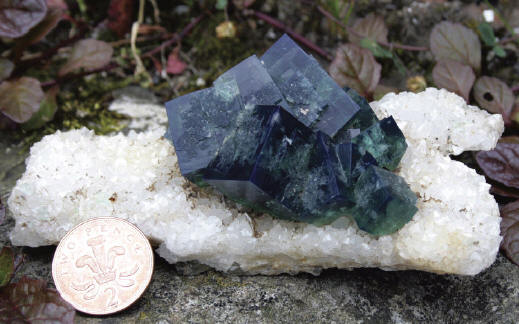
Fluorite on quartz from the Rat Hole Pocket, photographed in artificial light (upperphoto) and daylight, size of specimen 12 cm. UKMV specimen. J. Fisher photo.



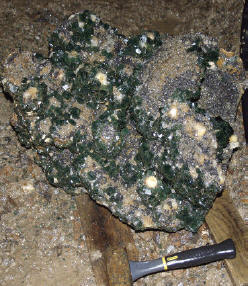





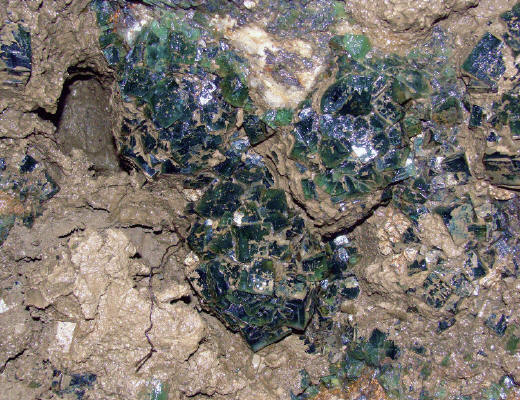



 YueGongAnBei 44051102000467
YueGongAnBei 44051102000467


 |
|